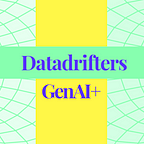Llama 3 Powered Voice Assistant: Integrating Local RAG with Qdrant, Whisper, and LangChain
Voice-enabled AI applications will forever change how we interact with technology.
You all heard the recent news from OpenAI and Google, multimodal systems are the future.
With human-like voices, voice assistants will scale any conversational task, whether it’s inbound sales, customer support or data collection and verification.
That’s why OpenAI and Google introduced multimodal capabilities across the GPT and Gemini family of models, to accommodate text, audio, images, and video inputs — to get an early share of enteprise adoption for various use-cases.
For example, GPT-4o matches and exceeds the performance of GPT-4, and it’s also
- 2x faster
- 50% cheaper
- 5x higher rate limits compared to GPT-4-Turbo
There were also many posts on social media to show how much better the code interpeter is, and also it does an absolutely better job at data analysis and visualisations.
This is huge for application developers, and we know that open-source will fully catch-up closed sourced models in 2024.
That’s why in this tutorial, I would like to walk you through the creation of a sophisticated voice assistant using some of the most advanced open source models available today.
